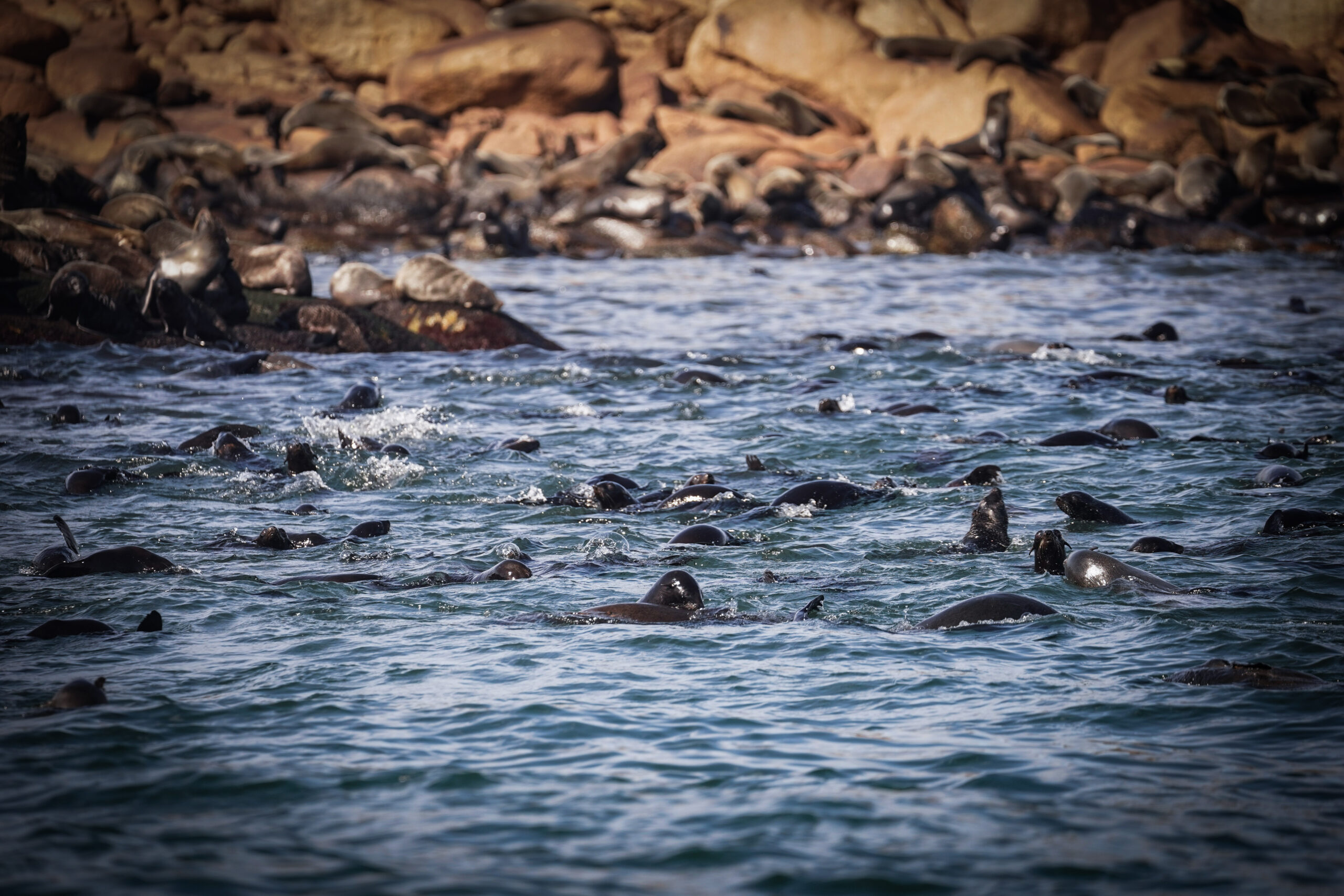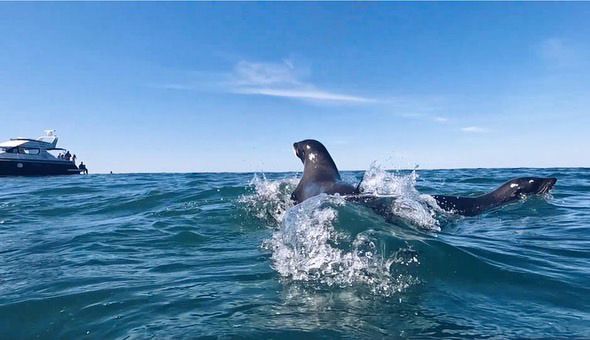Off the Atlantic coast of Uruguay, just a few nautical miles from Punta del Este, Isla de Lobos (Sealion Island) is home to a wondrous diversity of marine life.
Seals and sea lions surge through these waters – trusting their whiskers more than their eyes – as they hunt for fish. Their tactile world is in tune with flow and movement. As with other species of pinnipeds, they are semi-aquatic. Quick and graceful in the water, they spend part of the day hauled out on the rocky outcrops of Isla de Lobos.

The island, with its islets and submerged environment, is not only home to permanent colonies of South American fur seals (Arctocephalus australis) and sea lions (Otaria flavescens). Mussel beds provide habitat for bony and cartilaginous fish, for marine turtles and dolphins, while oystercatchers nest on land. Southern right whales pass by the area on their migratory route during the winter months.
In 2020, Gaia and Oceans5 supported local partners and marine scientists to request the inclusion of Isla de Lobos and its surroundings into the national system of protected areas. You can imagine our joy last month, with the Decree signed by President Luis Lacalle Pou on 22nd August 2024, declaring Isla de Lobos as Uruguay’s first oceanic marine protected area (MPA).

Though small in size, covering just 40km2, this MPA heralds an important step along the country’s roadmap ‘Uruguay Azul 2030’. Other priority marine conservation areas have already been identified, and Uruguay’s Ministry for the Environment is committed to protecting larger expanses of the sea and collaborating with neighbouring countries for the southwestern Atlantic.
Pristine Seas commended the Isla de Lobos MPA, having carried out two marine expeditions to Uruguay’s ocean in 2021. Our partner, Dr Andrés Milessi of Mar Azul Uruguayo highlighted the collaboration between government, scientists and civil society to ensure a sustainable future for generations to come.
“Together we can achieve greater wellbeing for our waters and the marine life that inhabits them”

The commitment of the marine and coastal division of Uruguay’s Ministry to effective conservation, is founded on a mindful process of marine spatial planning and a roadmap to ensure not simply declaring MPAs but monitoring them, to protect pinnipeds and other threatened marine species, such as sharks and rays. A holistic approach is needed for the regeneration of our ocean. The recovery of fisheries and more opportunities for local economies are key factors.
Protecting the sea from illegal fishing is just one of the challenges ahead. In a joint operation earlier this month, Mar Azul Uruguayo teamed up with the Navy and the National Directorate of Aquatic Resources (DINARA) to detect and deter illegal fishing activities in the “Restinga Pez Limón”, a future MPA. With support from the Skylight platform, a foreign fishing vessel was caught fishing for yellowtail amberjack across a fragile marine ecosystem within Uruguay’s Exclusive Economic Zone (EEZ). Collaboration with Skylight and Global Fishing Watch has exposed the rise of vessels that fish illegally in Uruguayan waters, and the need for national legislation. Thanks to national media coverage, public awareness is growing of the threat of illegal fishing to marine biodiversity and the livelihoods of local fishers, and hopefully policies will follow.
No doubt the pinnipeds of Isla de Lobos can teach us a lesson or two on how to navigate life’s challenges and choppy waters with ease.

